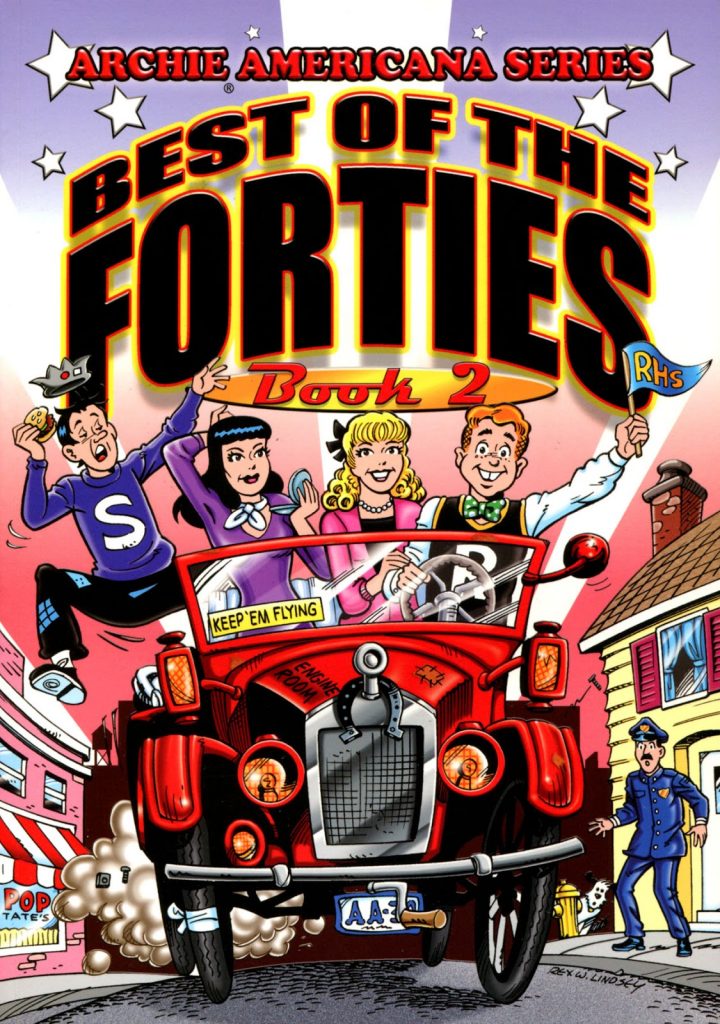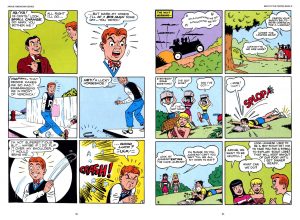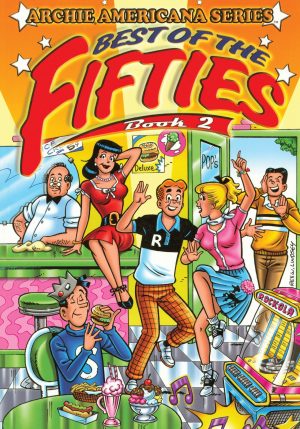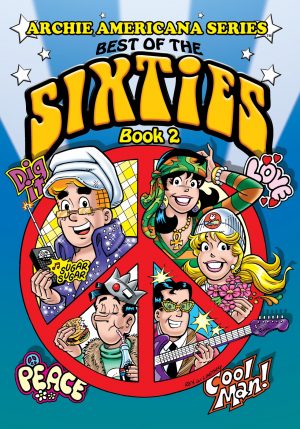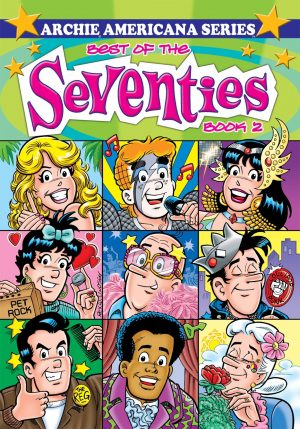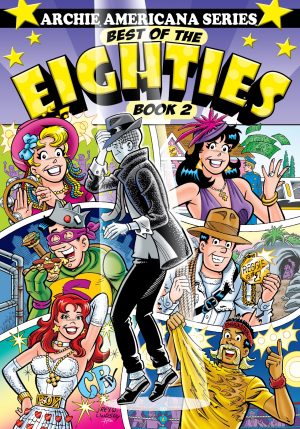Review by Frank Plowright
In some ways, and certainly for historians, the Archie strips from the 1940s are the most interesting. By the decade’s end the formula was established, and Archie stories ever since have followed it to perfection, sustaining a comics icon. Before then, though, there was some feeling of the way, and although selected to avoid anything off-message, some anomalies slip through. A farce about Archie going on a date with Miss Grundy would be unlikely today, even as comically styled.
The first Best of the Forties selection covered the important first appearances over half the book before moving onto more general stories focussing on the era’s trends, something Archie creators have always been good at incorporating. Starting in 1946, this collection avoids any early, primitive Archie, and interestingly, the greatest influence on it is the discovery of a set of 1940s production proofs for Archie’s lead strip in Laugh Comics. It means clearer reproduction than would be the case if the strips were just scanned and touched up from the old comics.
Unfortunately, though, it means the credits are less than fullsome. It’s easier to identify the artists, especially as Bill Vigoda, responsible for around two-thirds of the book, signs the strips on the splash page. His sample page shows a difference between the Archie of then and now, as he, and other characters, are allowed to become angry and lose their temper, rather than become grumpy or mildly peeved. There are panels of Veronica throttling and shaking Archie in the manner of Homer Simpson later throttling Bart. Archie’s father, nicely drawn as a balding man always in suit and tie, has several temper tantrums over the first few stories, featuring far more frequently than he would in later years. In a story about making a kite he’s actually the lead character, showing where Archie’s capacity for clumsiness and misunderstandings comes from. Vigoda sometimes wrote strips as well, but there’s no indication of whether that’s the case for the several he signs. He draws a creepy looking Archie, one who resembles a ventriloquist’s puppet.
Ray Gill’s Archie is certainly friendlier, but his figures are stiffer, and he doesn’t sell the slapstick with Vigoda’s skill, too often exaggerating it. It’s a small complaint, as he’s also efficient. Only two writers have been identified, the remainder anonymous.
These stories may date from the 1940s, but if slapstick’s your style of humour, then most of them still read well, and there are still a fair amount of laughs to be had. The stories were later combined with the first volume and the two Best of the Fifties collections as The Best of Archie Americana: The Golden Age.
